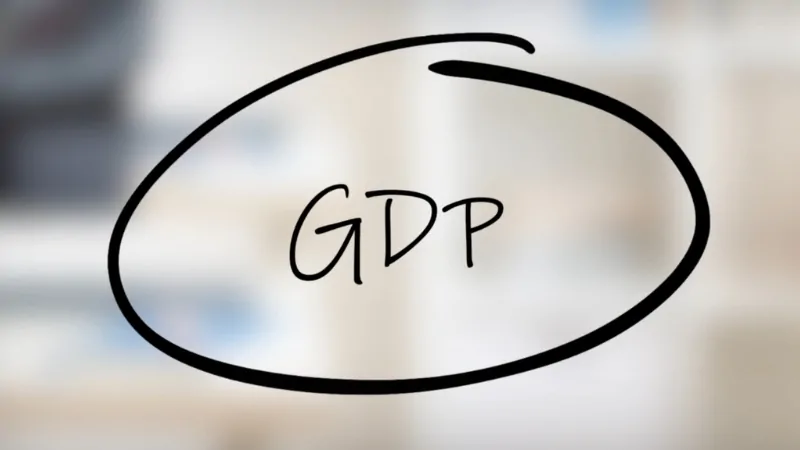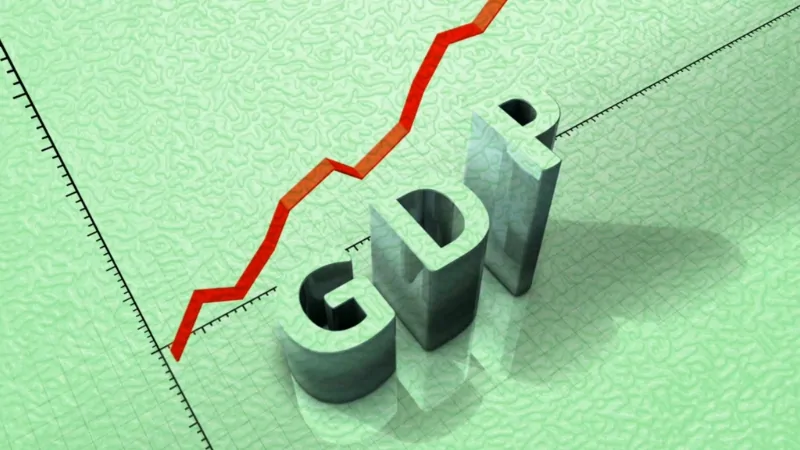The American economic landscape, measured by Gross Domestic Product (GDP), is less a unified market and more a deeply fragmented, high-stakes mosaic of 50 state economies, collectively totaling over $29 trillion in nominal output in 2024, according to BEA.
To analyze this colossal figure is to map the currents of national prosperity, revealing profound – and often polarizing – disparities in scale, productivity, and momentum. It is a map where megastates like California and Texas operate on the scale of global economic superpowers.
At the same time, entire regions struggle to adapt to 21st-century demands, constrained by geography, legacy infrastructure, and policy choices.
Having covered regional economics for two decades, I find that raw GDP rankings often conceal more than they reveal.
My focus here is to unpack the ‘why’ – why are certain regions accelerating away from the national average, and what are the invisible policy choices that determine whether a state builds high-wage prosperity or merely manages stagnation?
Table of Contents
ToggleThe Scale of Power: Nominal GDP Rankings (2024)
The sheer scale of the U.S. economy, with its Nominal GDP at Current Prices reaching $29.184 trillion in the calendar year 2024, is overwhelmingly concentrated in a handful of states.
The economic dominance of the three largest state economies – California, Texas, and New York – is staggering.
California leads the nation with a total nominal GDP of $4.103 trillion, followed by Texas at $2.709 trillion, and New York at $2.297 trillion.
The colossal magnitude of California’s economy is perhaps best understood through an international lens. In 2023, California’s Gross Domestic Product was approximately $3.9 trillion, comprising 14% of the nation’s total output ($27.7 trillion), as noted by PPIC.
This output ranks California internationally as the fifth largest economy, sitting just behind the entire nations of the U.S., China, Germany, and Japan.
The combined output of the top three states exerts a tremendous gravitational pull on the national economic narrative.
The sustained success of these states is rooted in structural diversification, though their specific industry profiles vary. California’s economic backbone is increasingly defined by Professional Services and the high-output Information sector, particularly Silicon Valley’s innovation engine.
Texas, meanwhile, benefits from strong energy production, vast trade networks, and expanding manufacturing capabilities.
New York relies heavily on its historic strengths in Finance, Insurance, and Real Estate.
Beyond the top three, significant economic growth is noted in states such as Georgia, Washington, and New Jersey, which anchor the next tier of large contributors, with Washington reaching $807.9 billion in 2024.
An important economic observation arises from this high degree of geographic concentration: the potential for systemic risk.
If just a few regions dominate national output – with California, Texas, and New York contributing over 30% of the U.S. total – downturns specific to their primary sectors (such as mass layoffs in the technology or finance industries) can disproportionately slow the entire national economy.
This concentration validates concerns regarding the fragility of national economic growth tied to limited geographic areas, even if smaller states perform moderately well.
The Anchor States: Economies of Limited Scale

The economic landscape changes dramatically at the other end of the ranking. The states with the lowest GDPs in 2024 were Vermont ($45.7 billion), Wyoming ($53.0 billion), and Alaska ($69.9 billion).
The nearly 90:1 disparity in total output between the largest and smallest states underscores the regional heterogeneity of the U.S. economy. Furthermore, these smaller economies often demonstrate high vulnerability due to reliance on narrow economic bases.
For instance, the biggest economic output driver in Wyoming is Mining and oil and gas.
Alaska is also heavily dependent on oil and gas extraction, although its industry contribution has decreased significantly (31.0% change over five years, ending 2016). This narrow focus means their economic health is often inextricably tied to global commodity price cycles, subjecting them to greater fiscal volatility.
A technical note on comparing economic data over time is critical here. When analyzing historical aggregate GDP figures, economic observers must acknowledge the cautionary note issued by the Bureau of Economic Analysis (BEA) regarding data discontinuity.
The BEA strongly advises against appending data series that span the year 1997, due to the shift from the Standard Industrial Classification (SIC) to the North American Industry Classification System (NAICS) definitions.
This shift, along with methodological improvements implemented after 2014 – such as recognizing research and development expenditures and the capitalization of entertainment originals as capital – means that historical comparisons must be treated with care, particularly when assessing long-term growth trends.
US States Ranked by Total Nominal GDP (2024)
Rank
State/District
Nominal GDP (Trillions USD)
Share of National GDP (%)
Key Economic Sector
1
California
$4.103
14.14%
Information, Professional Services
2
Texas
$2.709
9.34%
Energy, Trade, Manufacturing
3
New York
$2.297
7.92%
Finance, Real Estate
4
Florida
$1.706
5.87%
Real Estate, Tourism
5
Illinois
$1.137
3.92%
Professional and Business Services
6
Pennsylvania
$1.024
3.52%
Manufacturing
7
Ohio
$0.928
3.20%
Manufacturing
8
Georgia
$0.883
3.04%
N/A
9
Washington
$0.855
2.95%
Information, Tech
10
New Jersey
$0.847
2.92%
N/A
11
North Carolina
$0.839
2.89%
Manufacturing
12
Massachusetts
$0.781
2.69%
Professional and Technical Services
13
Virginia
$0.764
2.63%
N/A
14
Michigan
$0.719
2.44%
Manufacturing
15
Colorado
$0.553
1.91%
N/A
16
Arizona
$0.552
1.90%
N/A
17
Tennessee
$0.550
1.89%
Manufacturing
18
Maryland
$0.543
1.87%
N/A
19
Indiana
$0.527
1.82%
Manufacturing
20
Minnesota
$0.501
1.72%
N/A
21
Wisconsin
$0.451
1.55%
Manufacturing
22
Missouri
$0.451
1.55%
N/A
23
Connecticut
$0.366
1.26%
N/A
24
South Carolina
$0.350
1.21%
Manufacturing
25
Oregon
$0.331
1.14%
N/A
26
Louisiana
$0.328
1.13%
N/A
27
Alabama
$0.321
1.10%
Manufacturing
28
Utah
$0.301
1.04%
N/A
29
Kentucky
$0.293
1.01%
Manufacturing
30
Oklahoma
$0.266
0.92%
Government
31
Nevada
$0.261
0.90%
Real Estate/Tourism
32
Iowa
$0.257
0.89%
Manufacturing
33
Kansas
$0.235
0.81%
Manufacturing
34
Arkansas
$0.189
0.65%
Manufacturing
35
Nebraska
$0.185
0.64%
Manufacturing
36
District of Columbia
$0.185
0.64%
Government
37
Mississippi
$0.157
0.54%
Manufacturing
38
New Mexico
$0.141
0.49%
N/A
39
Idaho
$0.128
0.44%
N/A
40
New Hampshire
$0.121
0.42%
N/A
41
Hawaii
$0.116
0.40%
Real Estate/Tourism
42
West Virginia
$0.108
0.37%
Mining and Oil/Gas
43
Delaware
$0.103
0.35%
N/A
44
Maine
$0.099
0.34%
N/A
45
Rhode Island
$0.082
0.28%
N/A
46
Montana
$0.076
0.26%
N/A
47
North Dakota
$0.075
0.26%
Mining and Oil/Gas
48
South Dakota
$0.075
0.26%
Manufacturing
49
Alaska
$0.070
0.24%
Oil and Gas Extraction
50
Wyoming
$0.053
0.18%
Mining and Oil/Gas
51
Vermont
$0.046
0.16%
N/A
N/A
U.S. Total
$29.184
100.00%
N/A
The Measure of Prosperity: GDP Per Capita and Productivity
While total GDP measures scale, Gross Domestic Product Per Capita (GDP PC) measures productivity – the economic value produced per resident. The states that excel in this metric are characterized by specialized, high-value industries.
In 2024, the highest GDP Per Capita figures were recorded in New York ($117,332), Massachusetts ($110,561), and Washington state ($108,468). These figures reflect specialized, high-value output per resident, often driven by intellectual capital.
Massachusetts, for example, is heavily reliant on Professional and Technical Services, while Washington benefits from its dense technology ecosystem anchored by massive companies like Microsoft and Amazon.
The DC area is the wealthiest area of the country. Any economic hardship in the area is the result of bad policy… like subsidizing a gigantic mostly-idle building for a billionaire. https://t.co/voovEgxQWL
— Patrick Hedger (@pat_hedger) July 29, 2025
The standout anomaly in the per capita rankings is the District of Columbia, which recorded a GDP per capita figure far exceeding any state, reaching $263,220 in 2024.
This figure is heavily inflated by the concentration of high-wage federal government activity and professional services operating within the District’s very small geographic and population footprint.
As an analyst, I must stress the fundamental difference between total scale and per capita prosperity. A state like New York or Washington generates extraordinary wealth per person, creating a dense environment for innovation.
However, Wyoming shows how low population density can skew per capita data upwards, often masking broader economic fragility linked to single-industry dependence.
Structural Headwinds in Low-Productivity Regions
The bottom of the productivity ranking highlights areas facing deep-seated structural challenges. The states with the lowest GDP per capita in 2024 were Mississippi ($53,061), Arkansas ($60,276), and West Virginia ($60,783).
This low productivity correlates closely with slower-growth regions often characterized by reliance on legacy industries.
Academic analysis confirms that the industrial composition of a state’s economy is a “robust” determinant of its long-term economic growth.
These states generally lack the high-productivity professional and information services that define the high-output coastal hubs.
Further assessment requires comparing GDP Per Capita with Per Capita Personal Income (PCPI), which provides a measure of how much income residents actually receive. According to 2024 data, Mississippi ranks last in both metrics, with a PCPI of $52,017.
This alignment indicates a pervasive, deep-seated lack of both productive economic output and resident income, suggesting structural issues beyond simple price effects or temporary cycles.
It is necessary to consider the effect of the cost of living on these metrics. Stats America notes that coastal states boast high nominal PCPI – Massachusetts, Connecticut, and New York are top five in PCPI.
Academic literature suggests that the high costs of living and rents often erode the real benefits of these high nominal wages. For example, rents are significantly higher in locations like New York City.
This means that high nominal productivity does not automatically translate into superior real standards of living for all workers, especially the lower-skilled population, who are disproportionately affected by high housing costs.
Furthermore, high PCPI states do not necessarily guarantee full employment. California, a recognized productivity leader, reported an elevated unemployment rate of 5.5% in August 2025, according to the BLS.
EPI noted that this is notably higher than the rates seen in states like Montana (2.8%) and Nebraska (3.0%). This contrast suggests that the rapid economic expansion in specialized, high-output hubs creates highly segmented job markets, potentially leading to structural unemployment despite the concentration of immense wealth and high per-worker output.
State Economic Productivity Comparison (GDP Per Capita and PCPI, 2024)
Rank (GDP PC)
State/District
Nominal GDP Per Capita (USD, 2024)
Per Capita Personal Income (PCPI, 2024)
Unemployment Rate (Aug 2025)
N/A
District of Columbia
$263,220
$108,233
6.0%
1
New York
$117,332
$85,733
4.0%
2
Massachusetts
$110,561
$93,927
N/A
3
Washington
$108,468
$83,938
4.5%
4
California
$104,916
$85,518
5.3%
5
Connecticut
$100,235
$93,235
3.8%
6
Delaware
$98,055
$69,282
4.0%
7
North Dakota
$95,982
$70,966
N/A
8
Alaska
$95,147
$75,247
N/A
9
Nebraska
$93,145
$71,859
3.0%
10
Colorado
$93,026
$82,705
4.8%
11
Illinois
$90,449
$74,197
4.4%
12
Wyoming
$90,335
$85,945
N/A
13
New Jersey
$90,272
$84,071
4.8%
14
Maryland
$87,021
$78,538
N/A
15
Texas
$86,987
$67,942
N/A
16
Virginia
$86,747
$77,093
N/A
17
Utah
$86,506
$66,443
N/A
18
New Hampshire
$85,518
$82,878
3.1%
19
Nevada
$80,880
$68,657
5.5%
20
South Dakota
$80,685
$73,959
N/A
21
Hawaii
$80,325
$69,520
N/A
22
Iowa
$79,631
$63,573
N/A
23
Kansas
$79,513
$68,038
N/A
24
Georgia
$78,754
$62,393
N/A
25
Pennsylvania
$78,544
$71,148
4.0%
26
Ohio
$78,120
$64,225
N/A
27
Oregon
$77,916
$70,685
N/A
28
Indiana
$76,004
$63,802
N/A
29
North Carolina
$75,876
$64,855
N/A
30
Tennessee
$75,748
$64,908
N/A
31
Wisconsin
$75,605
$67,586
N/A
32
Rhode Island
$74,594
$69,936
N/A
33
Florida
$73,784
$70,390
N/A
34
Arizona
$73,203
$64,456
N/A
35
Missouri
$72,108
$64,740
N/A
36
Louisiana
$71,642
$61,332
4.4%
37
Michigan
$71,083
$63,221
5.2%
38
Vermont
$70,131
$70,086
N/A
39
Maine
$69,803
$68,129
N/A
40
Montana
$66,379
$67,615
2.8%
41
New Mexico
$66,229
$57,652
4.2%
42
Oklahoma
$64,719
$62,661
N/A
43
Kentucky
$64,110
$57,526
N/A
44
Idaho
$63,991
$61,836
N/A
45
South Carolina
$63,711
$59,995
4.3%
46
Alabama
$61,846
$56,684
N/A
47
West Virginia
$60,783
$55,138
3.8%
48
Arkansas
$60,276
$59,663
N/A
49
Mississippi
$53,061
$52,017
3.9%
N/A
U.S. Average
$86,143
N/A
N/A
Long-Term Growth Leaders (2000–2024): The Polarization of Output
As an analyst who tracks this data quarterly, I find this particular comparison the most illuminating of all the figures. It strips away short-term noise and shows where true wealth creation is occurring.
Between 2000 and 2024, the national average Real GDP Per Capita Change was 37%. Leading the nation by a vast margin was North Dakota, which registered a remarkable 104% increase in real GDP per capita. The next highest growth rates belonged to Washington (60%), California (60%), Utah (52%), and Texas (50%).
The economic story of these leaders is twofold: natural resources and intellectual capital. When I first saw North Dakota’s 104% figure, I thought it was an outlier – a blip – but it represents an economic revolution driven by the shale oil boom, fundamentally reshaping its economy and making it the third-largest oil producer as of 2024, according to Statista.

Texas also benefited significantly from strong energy production and related investment flows.
Meanwhile, states relying on intellectual capital provided similarly robust, sustained growth. The enduring success of Washington’s deep technology ecosystem and California’s Silicon Valley innovation engine is what truly excites me, however.
It suggests a non-cyclical, self-perpetuating engine of wealth that drives strong per-worker economic output and growth far above the national average.
This methodological change systematically favors economies based on intellectual property creation, boosting measured GDP output in technology, media, and professional services hubs.
Recent Volatility and Q2 2025 Fluctuations
For example, in the second quarter of 2025, the country’s economy (our real GDP) grew by a respectable 3.8% annually according to the BEA. But the states? They were all over the map. North Dakota, the one we always talk about for its long-term success, absolutely shot out the lights this quarter with a massive 7.3% annualized increase.
On the flip side, poor Arkansas actually shrank, posting a 1.1% decline in real GDP, putting it in last place.
This crazy jump in North Dakota really shows the double-edged sword of relying on things like oil. I can’t take my eyes off that state.
Sure, the long-term fracking and shale boom gave them phenomenal growth, but those huge, quarter-to-quarter swings tied to the global price of oil introduce a ton of risk—it’s the classic, high-stakes boom-bust cycle.

Meanwhile, states focused on things like software and innovation (think California and Washington) have a fundamental growth engine, intellectual property, that is much less affected by immediate global commodity wars or price drops.
That usually gives them a smoother, more reliable path over time than the super-high-growth, super-high-risk profile of the resource-extraction states.
My take is simple: the resource states offer thrilling, but temporary, growth spikes. But if you’re looking for consistent, long-term returns where your investments are relatively safe from market shocks, you’re still better off betting on the innovation hubs.
People tracking these numbers need to remember that the huge growth rate in an oil or gas state comes packaged with the very real risk of falling off a cliff just as quickly.
Economic Momentum: Real GDP Per Capita Growth (2000–2024) and Recent Q2 2025 Performance
Rank (Growth)
State
Real GDP Per Capita Change (2000–2024)
Q2 2025 Real GDP Annualized Change
Primary Growth Engine
1
North Dakota
104%
7.3% (Highest)
Energy (Shale Boom)
2
Washington
60%
N/A
Technology, Information Services
2
California
60%
N/A
Innovation Ecosystem, Professional Services
4
Nebraska
58%
N/A
N/A
5
Utah
52%
N/A
N/A
6
Texas
50%
N/A
Energy, Trade, Migration
7
Montana
48%
N/A
N/A
8
South Dakota
47%
N/A
N/A
9
Massachusetts
46%
N/A
Professional and Technical Services
9
Oklahoma
46%
N/A
Energy / Government
N/A
U.S. Average
37%
3.8%
N/A
49
West Virginia
34%
N/A
Legacy Industries (Coal)
50
Michigan
30%
N/A
Manufacturing (Post-Crisis Lag)
N/A
Arkansas
N/A
-1.1% (Lowest)
N/A
The Great Divergence: Policy, Mobility, and the Sun Belt vs. Rust Belt Divide

The Rust Belt Lag and Industrial Decline
As I look at the data, one thing really stands out: the huge difference in how fast states’ economies are growing. It’s a clear sign that some parts of the country just haven’t managed to update their economies for the post-industrial era.
Take the states that used to rely heavily on manufacturing, places like the Midwest and Appalachia. They’ve really fallen behind.
For example, states like Michigan, with only a 30% per capita growth since 2000, and West Virginia, at 34%, lagged well behind the national average of 37%. It’s a tough truth, but many of these areas never truly bounced back after the industrial output they lost following the early-2000s recession and the Great Financial Crisis.
These regions are fighting an uphill battle with some serious structural problems. We’re talking old, crumbling infrastructure, huge long-term financial obligations, and a difficult labor situation.
Just look at the unionization rates at RENEW – it’s 13.3% in the Rust Belt compared to a mere 4.3% in the South. This is in sharp contrast to the kind of business-friendly environment that’s fueling the explosive growth we’re seeing in the Sun Belt.
The Sun Belt’s Structural Advantage
The Sun Belt – including states like Arizona, Georgia, Texas, and Tennessee – is becoming the top destination for businesses moving within the U.S. This shift is happening because of strong population growth and smart policy decisions.
In fact, between 2021 and 2024, the Sun Belt grabbed nearly half (47%) of all the new manufacturing jobs created in the country.
These states are very appealing to businesses. Sun Belt governments are consistently rated among the best in America for commerce, offering major perks like cheaper energy, attractive tax breaks for manufacturers, and low or no state income taxes.
Studies confirm that things like how big the government is, its structure, and tax policies are genuine and significant drivers of a state’s economic growth.
This wave of investment is creating real economic energy; since 2020, Texas (3.9%) and Florida (4.6%) have seen their overall GDP grow faster than California (2.3%), thanks to companies relocating and a growing, lower-cost workforce.
Contextualizing State Health: Beyond the GDP Metric

A complete picture of state economic health requires examining metrics that complement GDP, such as personal consumption, labor market utilization, and entrepreneurial activity.
Personal Income and Consumer Health
Personal Consumption Expenditures (PCE) is a crucial measure of how much residents are spending and how confident they feel about the economy. In 2024, the total dollar amount of PCE across the nation grew by 5.6 percent.
Florida really stood out with robust consumer health, boasting a 7.0 percent PCE increase – the highest in the country.
This strong spending surge in Florida is a direct result of its rapidly growing population and rising incomes, fueled by people moving into the state. On the flip side, Mississippi, which ranks lowest in GDP per person, was also at the bottom for consumer health, with its PCE increasing by just 4.3 percent.
The vigorous PCE growth in states like Florida creates a powerful, consumer-driven upward spiral. This momentum can shield their economies from sudden external jolts much better than states that rely too heavily on unpredictable business-to-business services or commodity exports.
This strong spending is financially supported by lower personal income taxes and the consistent expansion of their resident base.
This economic trend, with its focus on population influx and consumer spending, is part of a broader set of state-level metrics that correlate with other socio-economic factors, though direct causal links to aggregate measures like the US average IQ of 98 are complex and generally not supported by this type of economic data.
The Labor Market Footprint
As of August 2025, some Plains states have incredibly strong labor markets – it’s tough to find workers!
Montana was leading the country with only 2.8% unemployment, and Nebraska wasn’t far behind at 3.0%.
Meanwhile, big economic centers like California (5.5%) and Nevada (5.3%) are still struggling with high unemployment. This really shows that just having a massive economy and lots of wealth doesn’t mean everyone gets a fair shot at a job.
The tight markets in the Plains suggest a lot of demand for workers compared to the local population, likely in specific industries. The higher rates in California, on the other hand, might point to deeper, structural problems, like people not having the right skills for the available high-wage jobs or huge hurdles to entry, such as the sky-high cost of housing.
Business application statistics offer a forward-looking measure of future economic vitality. In June 2025, California (37,778) and Texas (37,193) led the nation in new business formations.
This high rate of “high-propensity” business applications – those most likely to become employers – signals robust long-term potential for job and wealth creation.
Conclusion
@tombalitcho Top 10 Largest US State Economies by GDP in 2025! #top #top10 #us #economies #economy #gdp #usastates #states #wealth #usaeconomy #texas #california #fyp ♬ original sound – Tom Balitcho
The analysis of U.S. state GDP rankings for 2024 and 2025 reveals an economy accelerating into a period of extreme regional divergence. This divergence is fundamentally driven by a polarization between high-productivity intellectual capital hubs (California, Washington) and policy-agile, low-cost Sun Belt states (Texas, Florida).
The competition for capital and skilled labor is now centered on two distinct competitive advantages: first, the structural necessity of intellectual property generation, which drives high per-capita wealth; and second, the profound policy advantages of regulatory and tax environments found in the South, which drive mass migration and manufacturing investment.
States failing to adapt to 21st-century production models, largely represented by the slow-growth Rust Belt, face the risk of long-term structural stagnation.
Meanwhile, the wealthiest coastal states, despite their massive GDPs, are inadvertently inhibiting broader economic opportunity through self-imposed restrictions, particularly inefficient land use regulations that increase housing costs and limit labor mobility.
As the Congressional Budget Office (CBO) projected slower overall national growth beyond 2017, the interstate competition will intensify. Continued economic dominance and resilience will belong to the states that successfully manage to combine high productivity with low barriers to entry for workers – a combination few top-tier states currently achieve.
Policymakers must recognize that state-level policy choices – related to taxation, regulation, and infrastructure – are now as important as underlying industrial composition in determining who wins or loses in the future of the American economy.







